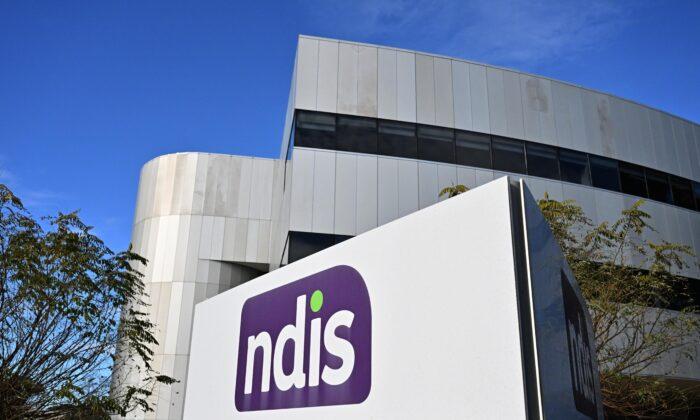Australia’s Budget has revealed the Albanese government’s plan to save more than $74 billion over the next decade by reducing the annual funding target of the National Disability Insurance Scheme (NDIS).
This follows a decision by Federal Labor to cap the annual funding target of the disability scheme at eight percent by July 2026.
In October 2022, federal Labor had forecasted the annual growth of the NDIS to be 13.8 percent. On May 9, the NDIS was forecast to grow at 10.4 percent per year over the next decade.
The NDIS currently has over 580,000 participants.
Meanwhile, Federal Labor Treasurer Jim Chalmers has assured Australians that eligibility for the NDIS won’t be tightened and that he remains committed to the future of the disability scheme.

“The way that the scheme is designed is to provide for people who need our help, and that will continue,” he told ABC Radio on May 11.
“The task for the government ... is to try and make sure that we get genuine value for money in these areas, and fraud is part of it, a big part of it.”
However, following the Budget hand down on May 9, the treasurer has faced criticism from the Greens Party for allegedly turning his back on the disabled community after the Budget delivered a $4.2 billion surplus.
“Our community was building trust between the federal government and the disability community; instead, this government have chosen to take us back to square one,” said Greens NDIS spokesman Jordon Steele-John.
Jumping the Gun on NDIS Review Findings?
Meanwhile, a review of the NDIS is expected to be handed down by September.Steele-John has criticised the federal government for cutting NDIS funding prior to the review’s findings.
On April 28, the national cabinet agreed to implement a new annual target growth of eight percent for the NDIS by 2026.
“The NDIS review has had input from many in the disabled community; people were hopeful that the scheme has a clear trajectory for change,” Steele-John said.
“It is disappointing that big decisions that will impact the future of the scheme are being made without considering the inputs into the review.
“When it comes to the economics of the NDIS—let’s not forget that the scheme directly employs 270,000 people across 20 different professions. In addition, it contributes to tens of thousands of other people having indirect work. The return on investment for the NDIS is significant at $2.25 for every $1 spent. In 2020-2021 the economic contribution of the NDIS was $52.4 billion. These benefits need to be in any conversation about the cost.”

Chalmers said the funds going into the NDIS would help those that the scheme was designed to assist.
NDIS ‘Unsustainable,’ Says PM
Albanese said the NDIS would cost Australian taxpayers just under $100 billion in a decade in April.“We need to have a sustainable growth trajectory for the NDIS in order to support equity and fairness for all Australians who are living with disability, including those not eligible for the NDIS and ensure that every dollar goes to those who need it most,” Albanese said in April.
Additionally, interest payment growth is expected to average 8.8 percent, compared to the 14.4 percent that was forecast in the October Budget.
“This primarily reflects the Government’s decision to bank tax receipts upgrades, which has resulted in lower deficits and lower debt, as well as lower assumed yields,” the Budget states.
“The medium-term outlook remains under pressure from fast-growing payments, including interest, the NDIS, defence, health and aged care. The Government is taking meaningful steps to reduce the structural deficit, including through moderating growth in NDIS spending and a fairer, more sustainable tax system.”
The NDIS is expected to cost almost $42 billion for the 2023-24 financial year, with the federal government contributing $27.9 billion, or 70 percent. By 2026-27, the NDIS is expected to cost $56 billion, making it the biggest expenditure in the Budget.
Meanwhile, the Senate has called for documents on the NDIS’s financial sustainability framework to be released.





